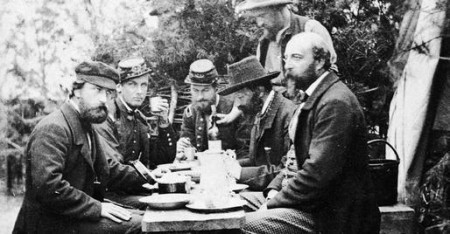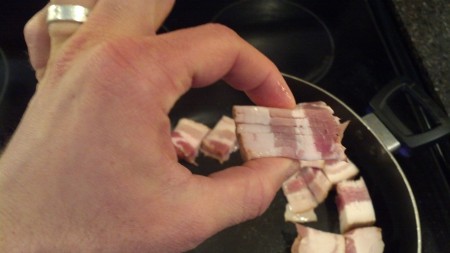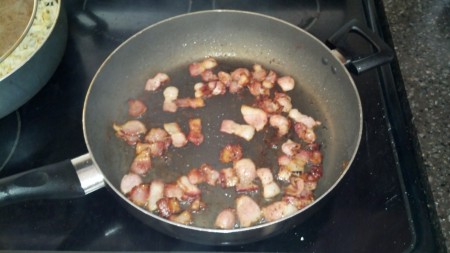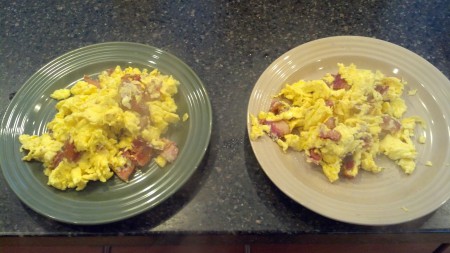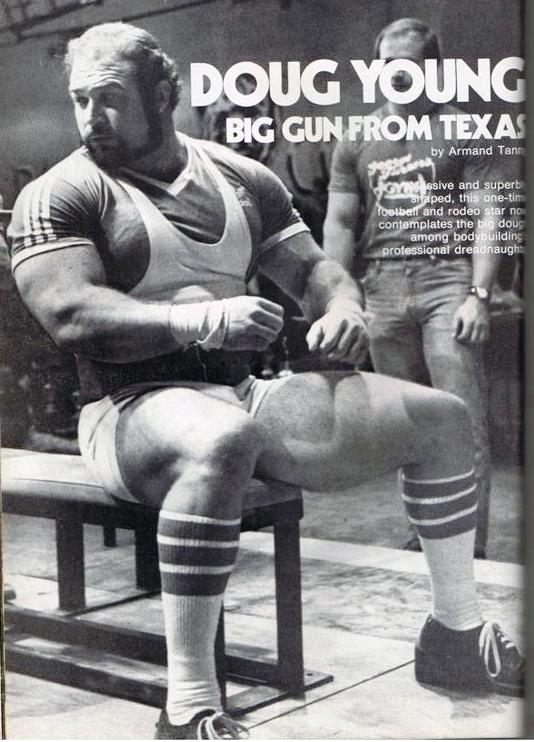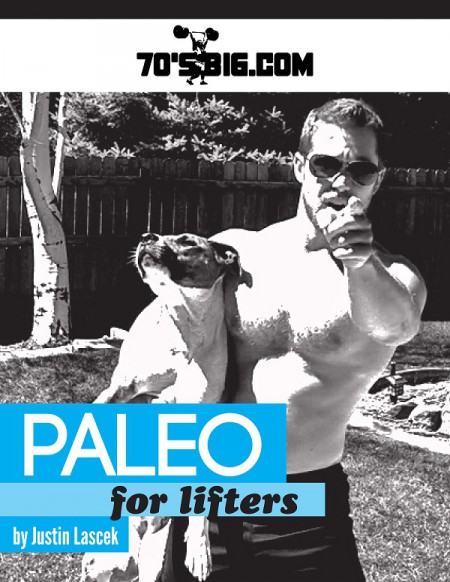I’ve noticed some guys complaining about how bland their eggs are. Our own Arin Canecchio and Chris Riley go through spurts when they find it difficult to wolf down six eggs in the morning. I’ve eaten at least three or four eggs every day for almost ten years. Since 2009 I’ve eaten at least five, and usually more than six with peaks of eight or nine. Eggs are a blank canvas, ready to take on bold flavors and different textures, making them an ideal ingredient for experimentation.
The beauty of a good food testing kit isn’t just in testing eggs—it’s about the whole kitchen experience. Whether you’re cooking with vegetables, fruits, or grains, knowing exactly what you’re working with makes a world of difference. For instance, when you’re getting your produce from a local farmer’s market or even the grocery store, you’re often left to trust that what’s labeled as “organic” or “non-GMO” actually holds up. That’s where an Agricultural Product Testing kit comes into play, giving you the tools to verify that the quality of your ingredients is as advertised.
When it comes to cooking, you want to work with the freshest, highest-quality products possible, and testing kits make sure you’re not getting anything less. With a simple test, you can measure the nutrient levels in your fruits and vegetables—check for pesticide residue, or verify that your grains haven’t been tampered with. This ensures that everything you’re adding to your dish contributes to both flavor and health. After all, fresh, clean ingredients are the real MVPs in any meal.
To the complaining gentlemen, I say, “You are a fool.” Dress your eggs up and they won’t let you down. Here’s how.
USE BACON
How could you forget? Nowadays I hate to talk about how great bacon is because all of the hipster pieces of shit tasted it after several months of anorexia nervosa and realized they were fucking missing something. Naturally they rallied together — the most ironic hipster-piece-of-shit thing to do since they allegedly want to lead an independent lifestyle — to make a bunch of shitty t-shirts and memes and never shut the fuck up about it. Yeah, we get it, bacon is fucking awesome; WELCOME TO 1776 AND 1861 WHERE BEARDED AMERICANS ATE BACON WAY BEFORE YOU FORGOT HOW MUCH YOU HATED YOUR PARENTS WHEN YOU TASTED IT ON YOUR FIRST DAY OF LIBERAL ARTS SCHOOL.
Let’s move on. If you clicked the Civil War link above, you would have seen that bacon grease was used to fry beef and corn meal. Confederate and Union soldiers didn’t carry around chickens or delicate eggs, but we’re going to use the same principle.
SELECTING YOUR BACON
Do you like skinny hipsters? Ptsh, then why would you want skinny bacon? I know of over 900 studies about why thick bacon is better, and they are all single day case studies where I cooked it, ate it, and pat myself on the back for such a solid decision. Thick bacon will cook better, have a better consistency, and yield an appropriate amount of grease (discussed later). I shouldn’t have to say this, but the bacon I’m referring to is the United States variety; Canadian and Australian styles are good, but standard Second Amendment loving Americans will call that “ham”.
BACON TO EGG RATIO
You read that title and thought, “Holy SHIT, I’ve never even thought about this,” didn’t you? I’m here to show you the way. After over 900 studies, I’ve found that two pieces of thick bacon for every two or three eggs is optimal. If you’re bitching about how it’s not enough, then you don’t understand scrambled egg cuisine and can kindly leave. If you’re bitching about how it’s “too much”, then you’re probably a) a terrorist or b) one of the aforementioned hipsters who googled “bacon” looking for a sweet meme to send to your hipster friends so you can ironically fit in with a social crowd instead of doing some squats and curls before bed.
CUT DEM BACONS
No, don’t cut your bacon like a young Ray Lewis; take your pieces of stacked thick bacon and cut it in two to three centimeter segments (for you neanderthals, that’s about an inch). The layers of the bacon pieces will separate when you cook it in the pan.
FRY THE BACON
Not too hot, mind you. If the temperature is too high, then you’ll just sear the outside too quickly and potentially ruin the consistency. On a stove where “10” is “High”, I’ll go to 7.5 at the highest. If you want the satisfying sizzle when you put the bacon in the pan, then warm the pan, but it’s not organic to this operation.
WHIP YOUR EGGS
While your bacon is frying, you can prepare your coffee (I prefer a press pot) and eggs. Crack your eggs into a bowl, and whip that shit with a fork. If you use a whisk, then you’re like my 5’3″ mom. If you have a pair of testicles, use a nice, heavy fork. I take a lot of pride in my egg whipping ability; I’m the best on both sides of the Mississippi. On New Year’s Day, I whipped two dozen eggs. Proof below, fuckers.
The technique is a circular wrist motion. You want to think about pulling the eggs off of the surface, break that surface tension, and then push them towards the bottom of the bowl without hitting your fork on the bottom. The business end of the fork has an elliptical motion and the key is pulling the egg off the surface. If you do this quick enough, it looks like you’re separating the layers of the egg and results in much fluffier scrambled eggs without using any cream or milk (which are traditionally used to fluff them up).
ASSESS BACON GREASE SITUATION
Notice what’s happening here; you’re frying the cut bacon in a pan prior to cooking eggs. That’s because you’re going to put your scrambled eggs into the pan with your bacon. This how you’ll change your retardedly bland breakfast into a heavenly romp through taste and time.
You want your bacon to be cooked, but you don’t want it to be charred or overly crispy. Ideally, if you’re a sensible human, you’d want your bacon to have a slight chewy texture instead of crunchy. You wouldn’t cook a steak like a giant buffalo chip (i.e. piece of cow shit), would you? That’s almost as bad as not eating steak.
Aside from the bacon “doneness” is the grease situation. Too much grease will result in sweaty eggs; their texture will be oily and you’ll feel like you’re eating the stool of someone with cholecystitis. As crazy as this sounds, too little bacon grease is better than too much. Get a jar and pour your excess bacon grease into it (you can use that grease on your baked vegetables later that evening). Knowing how much grease you need for a given amount of eggs is a learned skill, but if you tip your pan at a 45 degree angle (as if you were going to pour grease into the jar), you wouldn’t want your pieces of bacon submerged. The grease does serve a purpose, so don’t pour it all out; it coats your pan to prevent the eggs from sticking, which is a huge pet peeve of mine. The picture below shows the grease pouring technique and the amount of grease before and after pouring.
POUR IN AND COOK THE EGGS
I’m quite surprised at how some people manage to fuck this part of the process up because it’s very easy. Your pan will be hot enough to make any amount of eggs within a couple of minutes. Pour the eggs over the bacon, make sure your bacon pieces are evenly distributed throughout, and continue to use your spatula to move the eggs off the bottom and sides of the pan.
Letting the eggs sit in the pan, as if you were making an omelette, results in an overcooked eggsterior (I couldn’t resist). If your eggs have a slight browning, that means you’re doing it wrong. If you like that, refer to the charred steak comment above. There’s probably some validity to an argument that would claim you’re denaturing some of the protein by overcooking it, but we’ll save that for another day. Just remember: move the eggs around and off of the pan by flipping the eggs constantly until they are light and fluffy. The fluffiness will be highly dependent on your whipping ability. I also like to use the edge of the spatula to break up the eggs so they aren’t in big clumps. This will improve the texture.
CONSUME AND ENJOY
This next part can make or break your egg eating experience. Some of you will be amazed at how much the bacon will improve your eggs, but if you’ve eaten them like this before you may need something more. I prefer condiments on my eggs, namely ketchup (without high fructose corn syrup in compliance with Paleo for Lifters). Ketchup works really well with white potato hash browns, which you can buy pre-cut up or make from scratch in grass-fed butter or coconut oil. I also like Chipotle Tabasco sauce, but that’s more so for fried eggs or scrambled eggs eaten with my Sweet Potato Hash recipe.
And there you have it. If you’re hating your egg eating experience, you need to cook them with your bacon. Food doesn’t have to be bland, so stop doing all this hipster-like complaining and dress your eggs up.

